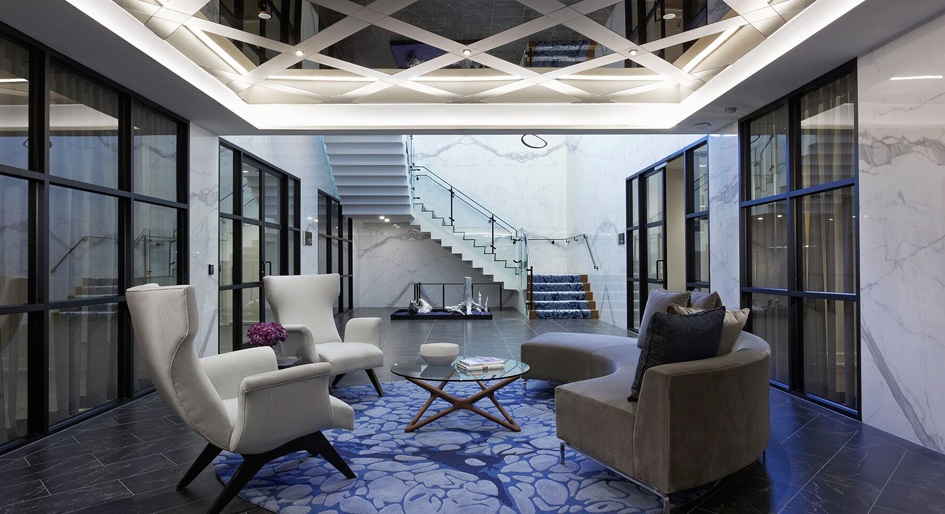Perched on the edge of the waterfront, south of the Distillery District near Sugar Beach, Toronto’s first LEED Platinum high-rise condo stands in the Bayside Toronto Community, a 13-acre mixed-use development that includes four residential buildings and two proposed mass timber commercial towers.
Completed in 2017 by developers Hines and Tridel, Aqualina at Bayside sought LEED Platinum certification well before the first inklings of construction began. Already a rare designation to achieve, LEED Platinum is often an easier feat for commercial office buildings.
“It’s very difficult to achieve LEED Platinum, let alone for a condo,” says Adrian Wang, director of innovation and sustainability at Tridel. “In a condo, there are less incentives for a developer to actually target those levels of LEED certification. Once the condo is sold, the utility savings go directly into the pockets of the homeowners who are paying utility costs from month to month.”
A significant up-front investment in technology was funneled in to lower energy costs for the project. Solar panels for renewable energy, water-efficient plumbing fixtures and lower-emitting materials were acquired. There was also a push for behavioural changes to lower residents’ heating profiles. Compared to other condos in the city, units were sub-metered to a much higher degree for hot and cold water, electricity and British Thermal Unit (BTUs), which represent an owner’s heating and cooling cost.
Sub-metering allows property owners and condo boards to reduce operating expenses and save residents money, along with all the energy efficiency benefits.
“We found that when you bury a utility cost or any sort of cost within a maintenance fee, people are less cognizant of how much electricity or gas they are using,” Wang adds. “Hopefully it will lower the utility cost throughout the lifetime of the building, which translates to more stable condo fees.”
With a few years into the lifecycle of many new condos in the city, fees are escalating, Wang points out. People just aren’t aware of how much electricity and gas they’re using.
“When residents aren’t being sub-metered or incentivised, they’re paying for everyone else and it becomes a lose-lose proposition,” he adds.
As with any green building initiative, there are challenges. For Aqualina, this meant teaching new construction practices that aren’t as apparent to the Toronto construction industry as they are in more progressive countries. Educating the trades on how to work with new equipment and technology was also key. Variable flow refrigerant (VFR) systems, for instance, were used in the net-zero dwelling unit at Aqualina.
“VFR systems are a totally different way of heating and cooling a building,” Wang notes. “They haven’t quite arrived in Toronto, but are largely adopted across Asia and Europe and Vancouver.”
From the beginning, Tridel took a more integrated design approach, making sure it had “buy-in” from all collaborators on the project from the trades to consultants, not only its customers. It was also important to have a long-term vision for the brand and its core values, rather than feeling constrained by fiscal reports.
“We’re creating a product that resonates with customers and carries more long-term profitability and sustainability,” says Wang. “The designation really speaks to the fact we care about the living environment, as well as the environment we’re constructing in.”
Photo: Aqualina at Bayside Lobby






